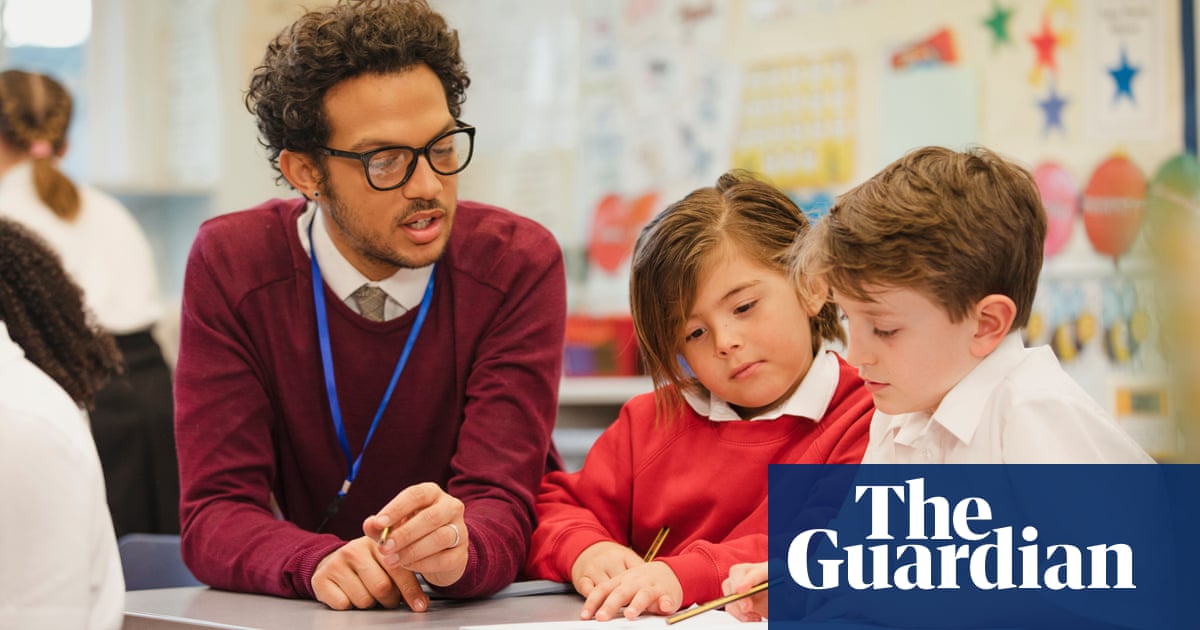
Four in 10 pupils in England are not in regular contact with their teachers, a study has found, amid mounting evidence of wide disparities in the provision of schoolwork during lockdown and fears that millions of children are doing little or nothing at all.
The report for the National Foundation for Educational Research (NFER) also found that a third of pupils were not engaged with their lessons, fewer than half (42%) had bothered to return their work, and pupils in the most disadvantaged schools were the least likely to be engaged with remote learning.
As concerns grow about the impact of learning loss on a generation of children locked out of school, a separate study for the University College London (UCL) Institute of Education estimated that two million pupils in the UK – around one in five – had done no schoolwork or managed less than an hour a day.
Prof Francis Green, the study’s lead author, said its findings painted a gloomy picture of lost schooling and low amounts of schoolwork at home. “The closure of schools, and their only partial reopening, constitute a potential threat to the educational development of a generation of children.
“Everyone is losing out in this generation, some much more than others. Better home schoolwork provision, and better still an early, safe return to school for as many as possible, should now become a top priority for government.”
The UCL research also shines light on the huge gap in provision between pupils in private education and those in the state sector during lockdown, with private school pupils found to be five times more likely to get near full-time teaching online as those in the state sector.
While seven out of 10 state school children (71%) had had between none and one online lessons per day, almost a third of private schools (31%) have been providing four or more online lessons or meetings every day, the study found.
Overall, pupils spent on average 2.5 hours a day doing schoolwork – half what was estimated in an earlier survey – while just 17% have put in more than four hours a day since schools closed in March as a result of the Covid-19 pandemic.
The findings of the NFER’s poll of more than 3,200 heads and teachers in England were similarly concerning. It found that teachers surveyed in May were in regular contact with just 60% of their pupils on average. Regular contact was deemed to be at least once a week, either via email, telephone, video call or an online platform.
NFER chief executive Carole Willis said: “There are considerable differences in the levels of pupil engagement in remote learning, particularly amongst the most disadvantaged pupils. This supports a growing evidence base highlighting the risk of the attainment gap widening as a result of this pandemic. There is a pressing need for a comprehensive and long-term plan to address this issue.”
The digital divide has also played a key role in significant discrepancies in home study. Nearly all private schoolchildren (97%) who formed part of the UCL survey had access to a computer at home, while one in five of those on free school meals had no access.
Private schools have also provided more offline work during lockdown – 31% provided four pieces or more, compared with 22% of state schools. In half of private schools, pupils have spent upwards of four hours a day on schoolwork, compared with just 18% of state schools.
“The private schools’ spending per pupil – at least three times those of state schools – enable them to gain better academic grades in normal times,” said Green. “Their resources and parental pressure have ensured that many more private schools have delivered a proper home schooling alternative.”
Children eligible for free school meals (FSM) are at a particular disadvantage, with 15% getting four or more pieces of offline schoolwork compared with 21% of non-FSM pupils. Meanwhile, 11% of those on free school meals spent more than four hours on schoolwork compared with nearly a fifth (19%) of their non-FSM classmates.
The UCL findings, published by the LLAKES Centre for Research on Learning and Life Chances, are based on data collected in the last two weeks of April from a survey covering more than 4,500 children aged five and upwards from households across the UK.
Among the geographical differences, online teaching is most common in London, with 12.5% of children receiving four or more online lessons or meetings daily, compared with a UK average of 7% and just 2% in Wales.
The findings came as secondary school pupils who are due to sit exams next summer began to return to class on Monday for some face-to-face time ahead of the summer holiday, with school leaders reporting high levels of attendance.
Meanwhile, the government published new guidance allowing schools to invite more secondary school pupils for a one-off meeting ahead of the end of term and greater flexibility to primary schools to admit more pupils from additional year groups if they can do so safely.
A Department for Education spokesperson said: “We will do whatever we can to make sure no child, whatever their background, falls behind as a result of coronavirus.”












